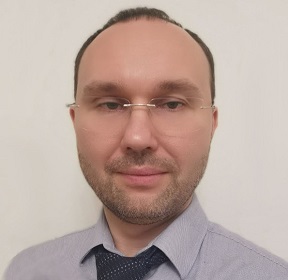
Denis G. Alekseev
Samara State Medical University RussiaTitle: A rational approach to deriving biological products for tissue engineering from children’s deciduous teeth
Abstract:
Against the background of the active development of such a modern trend of regenerative medicine as tissue engineering, the gradual entry of the latter into clinical practice, the issues of deriving, banking, and storing cell cultures and biomaterials used for the manufacture of structures - analogous to natural tissues will become increasingly relevant. At the same time, the problem of choosing affordable and effective sources of cells and biomaterials that match ethical requirements, coupled with the most rational use of them, is expected to require the closest attention.
One of the clinical medicine areas that actively implements and applies the achievements of tissue engineering is maxillofacial surgery and reconstructive interventions on the bones of the facial skeleton. Tissue engineering involves the use of cells, and biomaterials - as temporary analogs of the extracellular matrix (scaffolds) and factors that stimulate regeneration. Stem cells remain the most popular cellular material for tissue engineering. About the jaw apparatus, the most optimal source of stem cells may be the tooth itself, because this source is available, and tooth stem cells, unlike other stem cells, may have the ability to induce tissue growth in the alveolar processes. Stem cells are isolated from tooth pulp (DPSC), periodontal ligament (PDLSC), the dental follicle (DFPC), papilla (SCAP), and deciduous teeth (SHED).
In addition to cells, the second component of tissue engineering is needed - a biomaterial that mimics the extracellular matrix (scaffold). Synthetic and xenogenic analogues of bone tissue remain the most accessible source of biomaterial substitutes. Synthetic materials such as polycaprolactone, bioactive glass and various composites make it possible to prepare scaffolds with the desired shape, but low biocompatibility, fragility and possible toxicity limit their use. Biological materials of xenogenic origin (collagen, chitosan, agarose, hyaluronic acid) are well-biocompatible and biodegradable, promoting tissue growth. However, structures based on them have low strength and can cause a rejection reaction.
Therefore, allogeneic biomaterial remains the gold standard for bone tissue reconstruction, since it contains not only factors that promote tissue growth but is also immunologically and physiologically maximally acceptable to humans. Jawbones, alveolar processes, and teeth develop from neural crest cells, so a huge number of structural proteins are similar both for the bone tissue of the jaw apparatus and for dentin and cement. Therefore, it is quite logical that dentin, which makes up more than 85% of the teeth’ structure, is used as a biomaterial for tissue engineering in maxillofacial surgery.
Thus, the tooth can be a universal source of components for tissue engineering in maxillofacial surgery. In terms of the rational use of this source, it is worth noting that until now, methods for deriving either cell cultures or biomaterials from teeth have been known. A method for extracting tooth pulp to obtain stem cell culture is known. However, due to the presence of aggressive technological stages of processing, this method has disadvantages in the form of the death of part of the cellular material, as well as the disposal of valuable biomaterial – dentin, which can be used for the needs of regenerative medicine. A method for obtaining fibroblast-like cells from the pulp of deciduous teeth is also known. The disadvantage of the method is the high frequency of contamination of the material and the risk of infection transmission due to insufficiently effective processing of the original biological material. There is also a decrease in the number of extracted cells and the quality of the biological product. And with this method, dentin is also disposed of. On the other hand, allogeneic dentin is used as a biomaterial for tissue engineering in maxillofacial surgery. However, the method of dentin harvesting used does not leave a chance for deriving cellular material (stem cells) from the tooth. We have developed a method for parallel production of a culture of mesenchymal stromal cells (MSCs) and demineralized dentin from baby deciduous teeth that have fallen out and removed according to orthodontic indications in children under 7 years of age.
The proposed method of parallel waste-free production of MSC and demineralized dentin from baby deciduous teeth significantly optimizes the production cycle, and reduces the consumption of raw materials, time, and labor costs of personnel, allowing to obtain a full range of products for regenerative medicine with optimal osteoinductive and osteoconductive properties for successful regeneration of bone tissue. And the use of deciduous teeth removed according to orthodontic indications, in addition to naturally falling out, significantly expands the possibilities for obtaining biomaterial.

